VINCENT CARELLA—Interview by Jensen Toperzer and 8bits Considered
Vincent Carella was a director and lead writer on Bad Mojo. He is now a novelist—look for his book, Serpent Box, at your favorite booksellers.
ND: Bad Mojo has got a really weird premise. How did you guys come up with the idea for a game about a guy who turns into a cockroach?
VC: Well, the real genius behind the idea is a guy named Drew Huffman. It was Drew who came up with the concept of making a game about an insect. We were driven by technical obstacles rather than creative, at that point in time—1993. You know, computers are very slow back then, right at the dawn of the Internet, hard drives are slow. We’re working off of CDROM as a playback medium. Access speeds are slow on CD–ROM, screen refresh is slow. So, we asked ourselves, “What type of environment, world, character, etc. would be conducive to the hardware that’s available to users?” The smaller the character on screen, the better. And then we thought about bugs.
We were having a brainstorming session one day, and both Drew and I grew up in homes that had cockroach infestations. We were telling these stories in the office one day, and people started drifting over, and it seemed like everybody had a cockroach story. I’m willing to bet you’ve got a cockroach story.
ND: Yes, I’ve got a cockroach story.
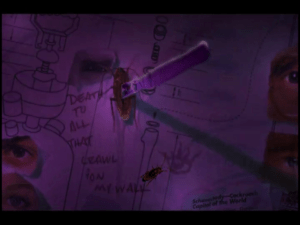
VC: Right, and we thought, “This is cool, it will resonate with people, and a cockroach is very small on screen, but the world a cockroach lives in can still be really interesting to people.” My creative partner and I, Phill Simon, took that idea and built a story around it. We thought about Kafka’s Metamorphosis, which in some interpretations involves the main character turning into a cockroach, and I was also really immersed in Joseph Campbell at the time, and we thought, “Okay, let’s create a mythic hero’s quest for this cockroach to take.” And that’s how Bad Mojo came about.
ND: That’s really interesting. Especially the bit about how the technical limitations drove the process. I’ve heard that about Myst, too.
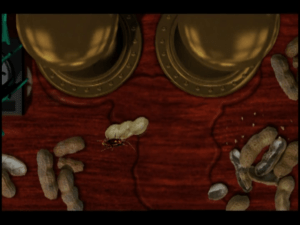
VC: Well, yeah—we knew the Millar brothers, and we admired their work, and Myst was definitely one of the inspirations. Except, and this is important, what we wanted to do with Bad Mojo, was avoid puzzles that came out of left field. In all the adventure games at that time, the puzzles felt like really weird gating mechanisms that had nothing to do with anything. All the puzzles in Bad Mojo had to be organic, natural, and real to the game environment. The puzzles had to be things the player could see in the gaming environment, or things that a cockroach could do, maybe with a bit of a stretch at times.
ND: Yes, and it comes through really well in that all the puzzles are very realistic, like, say, pushing a peanut shell across some water, things like that.
VC: Yes.
ND: Nowadays it’s pretty rare to see people working with live actors in gaming. It’s become easier to render characters and use voice actors. At the time, you weren’t really able to do that, so you used live actors. What was it like working with live actors? Did you take an active role in directing them?
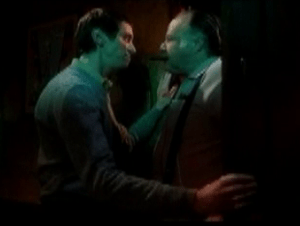
VC: Well, Phill and I came from film and television backgrounds, and theater was really in our DNA. We wanted to make the game feel human. We got into gaming in order to tell stories, not just make games. We wanted to use gaming technologies to enhance the storytelling process. Stories are about people, so at the time we wanted to get people into our games. We felt that the marriage of live action and CG was just the right way to go. We built a practical set, and had a studio and a crew, and cast the roles of Roger and his father, and the various characters in the game…to my mind, the practical shoot was the most enjoyable, yet nerve wracking part of the project. You’re on a very tight schedule on a shoot like that. Our line producer was a guy by the name of John Fishman who kept everything really running. We weren’t looking to produce Academy Award-winning performances here, we used to joke that we had Gilligan’s Island-style production values, but that was by design, because Bad Mojo is heavy and dark, and the world you’re in is scary, and these movies were kind of a break from that.
ND: Yeah, you spend 20 minutes crawling over a fish head! It’s kinda depressing. Especially for the fish.
VC: I wish I could say no animals were harmed during the production of Bad Mojo, but that would be a lie.
ND: Oh, yeah—there were a lot of animals involved in Bad Mojo. Can you tell us a bit more about that? Especially the cat.
VC: The cat was great! We hired a professional cat wrangler and trainer, who brought in three cats. The cat we ended up using, named Franz in the story, was a big Maine Coon. The cat was the easiest animal performer to work with because we had a real cat wrangler on set. So the cat was fun–I think we got the cat in one day. On the other hand, working with spiders, rats, the fish, the mice…what else is in there?
ND: You also had to work with roaches, clearly.
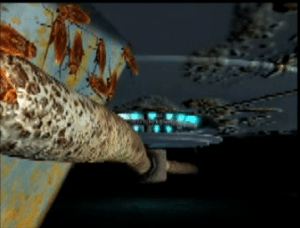
VC: Well, the roaches were the most fun part because we found the Carolina Biological Supply catalog, which had what they called a “Roach Kit,” so they would send you six German cockroaches in a small container for classroom use…though I would cringe at the kind of classrooms that would do this. We ended up raising quite a roach colony. I’d venture to guess there must’ve been a thousand roaches by the end. That cage was swarming with them. One of the things we were particularly proud of were our modelers, like Bill Zettler and Charles Rose, were able to make a cockroach that looks and behaves so realistically that your skin crawls when you play that game. And the reason is that we had cockroaches to study—how they move, how they reflect light, their rhythm.
ND: But how did you study them?
VC: Every time we wanted to study them, we had to slow them down, so we had to take the entire cage and put it in the freezer, and they’d slow down and you could put them outside and they’d be very sluggish. And they’d warm up and we’d put them back in their cage and they’d be fine.
ND: Awesome. Bad Mojo is really interesting in that it blends a mundane rent dispute, a son trying to find his father, and a dive bar with mythological and literary elements. How did that come together?
VC: Well, I think we were inspired by It’s a Wonderful Life—
ND: It’s a Wonderful Life with Roaches?
VC: Yep. And The Wizard of Oz, Joseph Campbell, Jungian stuff, and ancient mythology. There wasn’t one specific anchor, we were inspired by all those things. Just tapping into the collective unconscious, which is what myth is all about.
ALEX LOUIE—Interview by John Skylar and 8bits Considered
Alex Louie began his career in software working at Macromedia, where he met the rest of the team that went on to make Bad Mojo. Alex served as a co-Producer during the making of Bad Mojo.
ND: Can you tell us about your role on the game, Alex?
AL: Being the Producer is basically being the Jack of All Trades. It’s wrangling the team. My job was to be the go-between for the Art Team and the Engineering Team and make sure things were copacetic.
ND: How did you get involved with this game about a guy who turns into a cockroach?
AL: Well, my friends Drew Huffman, Vinnie Carrella, and Phill Simon were working at a company called Drew Pictures at the time. They’d done a game called Iron Helix, and they’d been working on a secret game for about six months at that point, and they’d been exploring technologies. I had worked with them previously, and I came in just to see what they were doing, just looked around, and a couple months later they asked me if I wanted to come in to help, because they were looking for a technical direction.
ND: You’d worked with them before. Did you work on Iron Helix?
AL: Yeah, I did some of the checking of the databases on that game, it was a great game for the time. It was part of the reason I came back to work with Phill and Vinnie. We’d worked together at Macromedia, and I’d gotten into the industry because of games. I was working at Genentech after I got out of school, and I was just kinda bored in the lab and I was playing videogames in the lab, and I thought, “Hey, this is pretty great,” and I just fell in love with video games.
ND: Yeah–you have a pretty interesting background, isn’t that right?
AL: Well, I was a typical Asian kid, my parents wanted me to be a physician.

ND: Did that help you in Bad Mojo?
AL: I think the closest it came was cutting apart a fish. Though, it taught me problem solving and how to be technical, which is always useful.
ND: What made you decide you wanted to work in games, then?
AL: I got out of school and realized I didn’t want to [be a physician], I didn’t want to sit in a lab…and I found a 3D program on a Mac in our lab at Genentech, and I started learning more and more about computer graphics, and I got lucky meeting Phill and Drew, and other people who helped me learn things along the way.
ND: That’s really inspiring, especially for people who may think it’s too late to learn technical skills like that. Not only did you get into the gaming industry, you helped design a really creative game like Bad Mojo, which was a lot different from the typical first person shooters that dominated the early 90s.
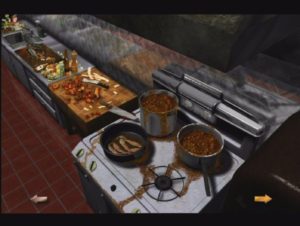
AL: Yeah. Phill and Vinnie are really great storytellers. When I came on, it was really to help them manage the development process. When I came on, they had a lot of different ideas but they were still looking for a hook. They locked themselves in a room, and they came out with this crazy story that tied all these different screens together, and I had to get the art and engineering teams to make it a reality. A lot of what I did was talking with Phill about how certain things needed to look grittier or dirtier. Dan Meblin, my senior 3D guy, built this great stove range, and it was really pretty…and then I had to tell him he had to dirty it up with some chili, and his eyes got all sad.
ND: And all this was designed to run off a single CD-ROM?
AL: Yeah, it is. There were about 720 screens, and one of the cool technologies in the game was that we worked out a way to scale and rotate bitmaps on the fly. Bill Zettler and the rest of the engineering team really put together a great engine. The audio engine was really good, too. If you play the game in the dark, it’s kinda scary.
ND: Speaking of atmosphere, you spent a lot of effort making the roach as realistic as possible. How’d that work?
AL: Yeah, actually the roach is a gigantic 3D model that we rendered in Electric Image. We put together a film strip of every single possible view you could have of the roach. The animators studied a bunch of cockroaches, got the walk cycle down, we animated it, rendered it…it was pretty fantastic.
ND: Yeah, and it shows. To switch gears, let’s talk about some of the strange things you had to do to make this game. What’s your favorite story?
AL: Well, there were a couple things. One was the fish story. In the game, someone’s cooking gumbo, and there’s a catfish, and therein lies one of the clues. So, we had to go to Chinatown in San Francisco to get a live catfish. Usually, in Chinatown, they kill it for you. So Vinnie goes up to the fishmonger, and says, “I want a catfish, but I want it alive.” The fishmonger was just incredulous, saying, “You want it alive??” So we got two catfish, and we let them swim around a little bit, and then when we did the scene we plopped it down on a stainless steel table, and cut its head off. The knife was pretty dull, which I felt kinda bad about, but it’s a pretty gory scene, and some of it is actual fish guts.

ND: Well, we’ll try to keep PETA off you guys.
AL: The catfish was the only thing that I felt bad about. The cockroaches were fun.
ND: Did you do any insect work during your degree?
AL: Actually, I did dissect a cockroach…
ND: And you said you didn’t use your degree!
AL: [Laughs] That’s true. We had a pretty nice menagerie. We had the catfish, cockroaches, a tarantula, some other spiders…the animators wanted to study the walk cycle of a spider. Phill and Vinnie set up a light table, and they had this very thin spider, and they hit the lights, and it just burned right up!
ND: Oh no!
AL: Yeah, well, there were a couple of things that were harmed during the production. But not any mammals. Did Vinnie tell you about the cat insurance?
ND: There was cat insurance?
AL: So, we always say “cat insurance” as a joke amongst ourselves, because we actually had to buy insurance for the cat to be on our set, and we thought, “Do we really need to buy this?” But the wrangler wouldn’t bring the cat on set without it…so any time we have something like that, we call it cat insurance. There are a lot of great stories to tell. Almost too many. That’s the fun thing about Bad Mojo. It’s almost twenty years old, it’s getting a second re–release, and there’s still new stories to tell. I love talking about Bad Mojo.
PETER STONE—Interview by Paul Schuler and 8bits Considered
Peter Stone, known for his work as frontman of the band Xorcist in the 1990s San Francisco music scene, wrote the original score and ambient sound for Bad Mojo.
ND: So, who are you and what have you done?
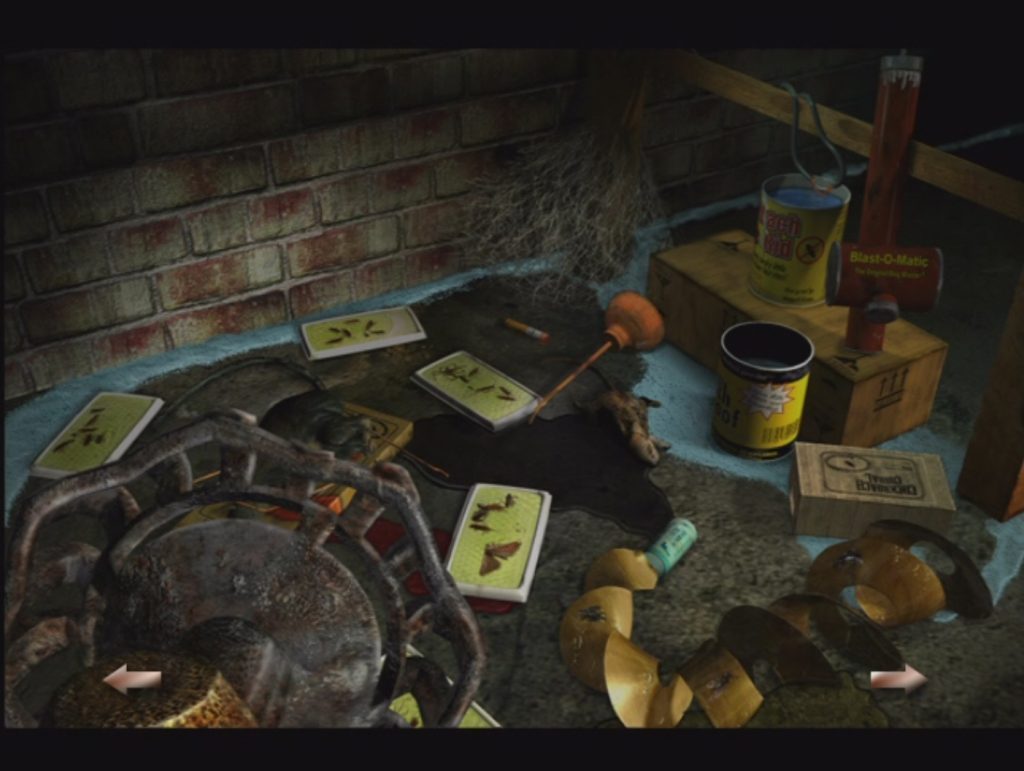
PS: I’ve done quite a few things, but what you’ll care most about is my role as the composer and sound designer for Bad Mojo. Before that, I actually had released quite a few other musical endeavors under the name Xorcist, and a couple of other projects with the creators of Bad Mojo. But I’ve also run [night]clubs, programmed computers, and a few other things.
ND: The guys at Night Dive actually sent me a 2 CD album full of songs for Bad Mojo, and the second disc has a bunch of remixes by somebody named Xorcist…and it turns out that’s you! So you got you remix your own songs for the album?
PS: So I did a couple of remixes, but there’s also another gentleman who was working with the project, their in-house sound guy, who worked my stuff into the game. He was a musician as well, Bill Preder, and he remixed some of the songs and he did an awesome job. Some of those are on there, along with my remixes under the name Xorcist.
ND: Sort of weaving together your two separate lives?
PS: It is, and that’s kind of how I met the crew of Bad Mojo. They actually originally contacted me because of my being Xorcist, and from there it developed into a relationship for one game, and then that developed into my working on Bad Mojo.
ND: That was for Iron Helix, correct?
PS: Correct.
ND: I’d noticed that you’d worked with them on that, and comparing it to Bad Mojo, it feels very different. What about your style did you have to change for Bad Mojo?
PS: Good question! Iron Helix was more of a “Here’s the game, here’s what we need,” kind of relationship and I made the sound work. Bad Mojo was more of an environment that was given to me through images, storyboards, concepts. It actually did something that at the time, I think, was starting up. Thomas Dolby was kind of playing around with some videogame music, and he had an idea of creating segments, loops you would say, that would change dynamically with the score of the game. That I believe came around the same time, maybe a little bit later, and it just happened to be the same kind of idea that I was told they’d wanted for Bad Mojo, creating auditory environments that morph and change with gameplay. It changed from “Here’s a static scene or a movie,” and it turned it into, “immerse yourself into a whole game environment, and the sound has to change based on how the environment changes.” It really was fun to do, spending those weeks immersing myself into that atmosphere.
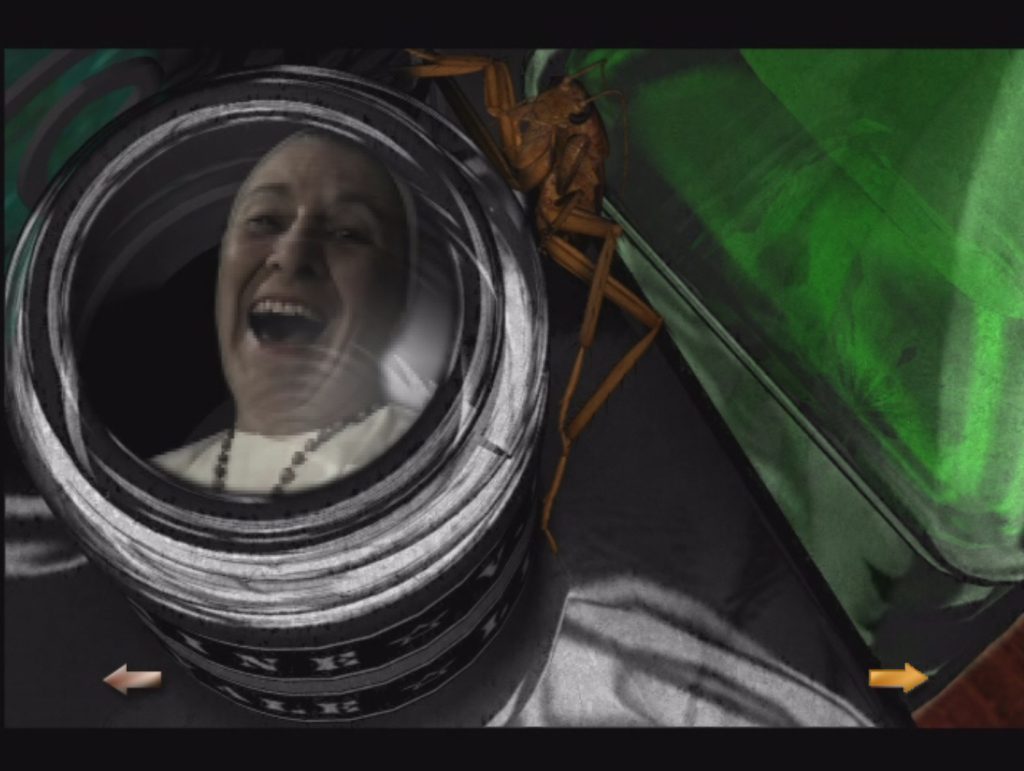
ND: And also reading a lot of Kafka, I’m sure.
PS: Yeah, exactly. But it was really fascinating, because nobody had really done this before. And then I read about it and said, “Oh hey! Another musician is working on this.” And I don’t think Thomas’s ever really got off the ground, I could be wrong, but I know that this one was balls to the wall, so to say. There was quite a bit of taking finished pieces created [as loops], and then doing the cutting and crossfading, and then the programming to make the implementation work so that your score for the experience is different throughout the entire game.
ND: It sounds like they gave you a lot of freedom when it came to scoring the game, just saying, “Here’s your scene, here’s your freedom—go for it.”
PS: Exactly. And it had to be done that way, there were no static scenes except the cutscenes. That atmospheric music wasn’t just a noodle on a keyboard, that was a completed piece based on the level or the room, and then the programmers did an excellent job of creating that dynamically as you walked–or skittered–around.
ND: On that same token, it seems like the game emphasizes atmospheric audio over individual themes for each character. Why and how did you do that?
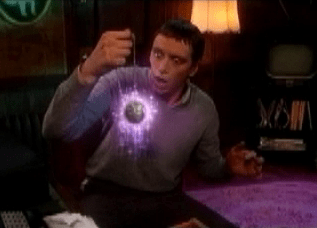
PS: Well, I didn’t really pay a ton of attention to matching the thematic elements of characters to a particular sound. Normally you hear that–normally you associate a character with some sort of melody. But the whole thing was such an acid trip that I didn’t want to pigeonhole people into that. I wanted to keep the sensation of surrounding them with an alien landscape. So, I basically did that through the choice of my equipment, utilizing stuff like the PBG, the microwave…equipment which would be considered now to be archaic, but had a definite “sound” to it, which could lend itself to being that type of environmental sound. It kinda worked out well that I was the artist who had a bunch of weird crap, and in using it, created such a bizarre landscape that it really worked throughout. Today, preset sounds are all the rage, and even back then I was against that. I’d get a unit, a machine, and stay away from presets, try and make something really unique. These days very artists are doing that.
ND: That’s one of the most amazing things about people composing for games in the late 80s/early 90s, when the technology wasn’t really “there,” and you had to push that technology to or even past its limits to get these really cool effects. Bad Mojo really accomplishes that. How did you manage it?
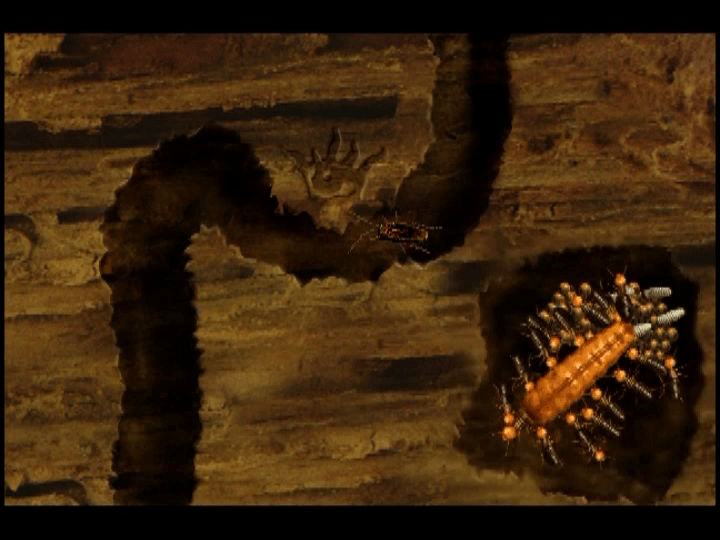
PS: Yeah. I’ll admit that some of those were happy accidents that came through planned strategy. That’s really what’s nice about being given the time that I was given to work on Bad Mojo. For a lot of projects like it, the artist will be given two weeks to complete what should take two months. The crew was very gracious to give me the months to work on the score and really envelop myself in it, and utilize all the instruments to my advantage. Including, one of the main programmers had a pet that he gave to me, Buffy, a Madagascar hissing cockroach. Any hissing cockroach sounds that you hear during the game are Buffy being sampled. My studio included Buffy on one side, and Frida, a tarantula who was a model for the game. Back in those days, it was really wonderful—it was a freakhouse creating freakish sound design. That’s really, I think, what gives Bad Mojo its unique sound.
ND: I’m imagining this studio of yours, where you’re actually sitting down and Foleying and sampling a cockroach and a tarantula as musical instruments.
PS: They were very cooperative. It was a lot of fun!
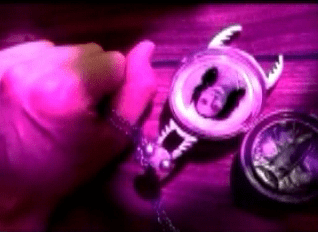
ND: It seems like you came to all this from an electronica-industrial background. How did you find your way to gaming? Do you feel like you missed your calling as a DJ?
PS: Funny you should mention—I am a DJ. Aren’t we all? I had come to SF after starting an online bulletin board, back in the days of the modem, called Cyberden, and operating as Xorcist I thought I’d bring this online industrial-gothic community together. So I was DJing and running a club called the House of Usher, and at the time this sound really matched with Iron Helix, which was very dark, and then by the time Bad Mojo came around I was still in full swing of running the club, DJing, and touring, and it seemed like a perfect match. It was great working with the team—they were visionaries, I think they still are.
ND: So are you still holding out for Bad Mojo ii?
PS: Hell yeah!
ND: This is the age of Indiegogo and Kickstarter, it could happen.
PS: It could–and if it does happen, I still have my studio and MIDI interface.
